Engagement Ring - In Progress
Setting
Stone
Limited Time: Purchase any Engagement Ring and receive a $250 Gift Card for your Wedding Band.
We guarantee that every single purchase directly impacts one person's life by giving them access to clean water.
It is easy to get caught up in all the letters and numbers of diamond color and clarity. A website may tell you something, while a different jeweler tells you another. However, it pays to think for yourself. Can you actually see the differences in what they’re showing you? If you can’t see it, we’d recommend not prioritizing it.
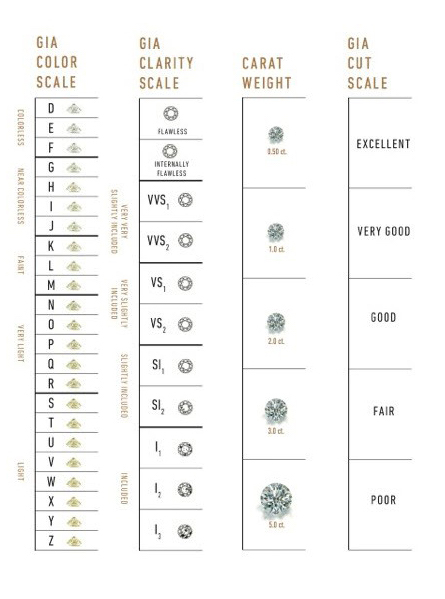
One of the first things couples learn about diamond grading is D-E-F “colorless” vs G-H-I-J “near colorless.” And then there is diamond clarity with VVS, VS, SI acronyms. Some say clarity is more important than color, while others say color is more important than clarity. But in reality, you don’t need a flawless stone. And you don’t need a colorless one either. Instead, focus on visually comparing color and clarity with your naked eye, and determine what you can actually see. If you cannot see it, then you do not need to prioritize it. Here is an example of clarity:

Here’s an example of color:
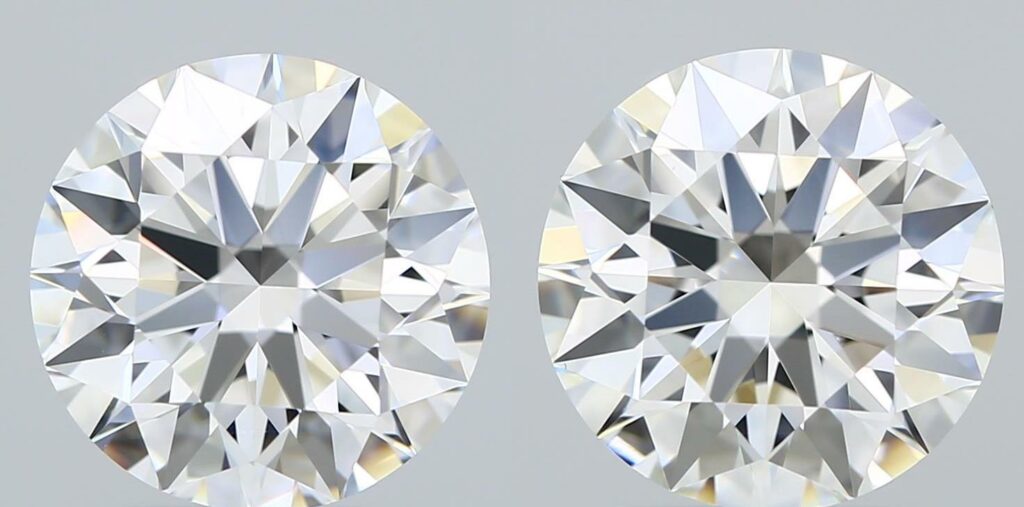
In a Round engagement ring, don’t over-focus your attention on ultra-high color and clarity. A stone that looks white and doesn’t show eye-visible inclusions will look almost identical to a colorless, flawless stone. Instead, focus on cut – that is where you’ll get the biggest upgrade in look.
The cut of your Round engagement ring is not just its circular shape. Its “cut” also refers to how well the angles of your center stone align, how symmetrical all the facets are, and how well the stone is polished. These little differences are directly related to how much your stone sparkles. And, sparkle is the most important aspect of a diamond! The round brilliant was literally created to return the most light. As a result, they have the most sparkle to lose. So, not knowing the little differences in round diamond proportions is one of the biggest mistakes in choosing a round diamond.
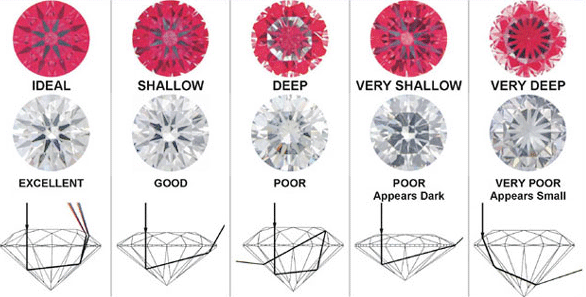
Ideal round diamond proportions create max sparkle
Nailheads and fisheyes occur when crown and pavilion angles are mismatched to an extreme extent. And, crown and pavilion “ideal” alignment makes certain round brilliants sparkle significantly more than the rest. So, understanding how these two angles are supposed to interact is very important. Because, without knowing what to look for, one can pay a premium for an “Excellent cut” stone, yet not get ideal round diamond proportions and max sparkle.
For max sparkle, each angle in your Round Engagement Ring must work together with the others. So, a Round diamond must fall within the below ranges AND its angles must align ideally.
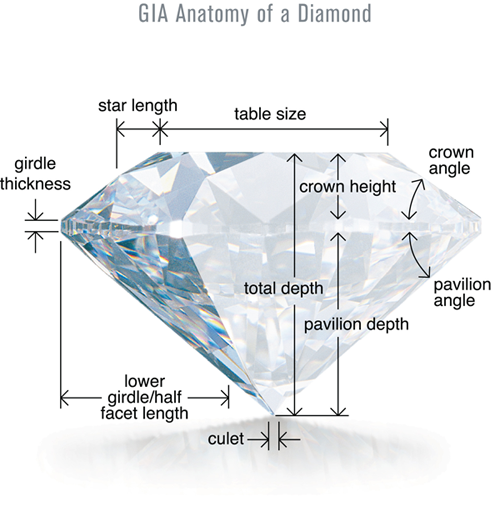
A bit frustratingly, GIA and the industry do not agree on what constitutes an “Ideal” Round Engagement Ring diamond. In fact, a quick Google search shows “Ideal” means something very different from one company to the next. That said, these parameters are a broad range that most jewelers will agree is a fair “ideal” starting point.
Choosing a diamond that falls within these parameters means that they are a great candidate for excellent sparkle – and they will not have a fisheye or a nailhead. GIA “Excellent” cut diamonds typically fall within these parameters (so that’s an easy way to start this journey). But that’s not the end. After you’ve selected a few candidates, then look at their angles (you’ll find them on the GIA Certificate)!
Pavilion angle: The “pavilion angle” is the angle of the bottom facets on your diamond, compared with its girdle (its outer diameter).
Crown angle: The “crown angle” is the angle of the top facets against the girdle.
How they work together: Crown and pavilion angles need to coordinate with one another to bounce light back out the top of the diamond, and not lose it through the side or bottom. Remember using a mirror to play with sunlight as a kid? You know how when you moved the mirror, the light reflection moved, too? Those are how diamond angles work.
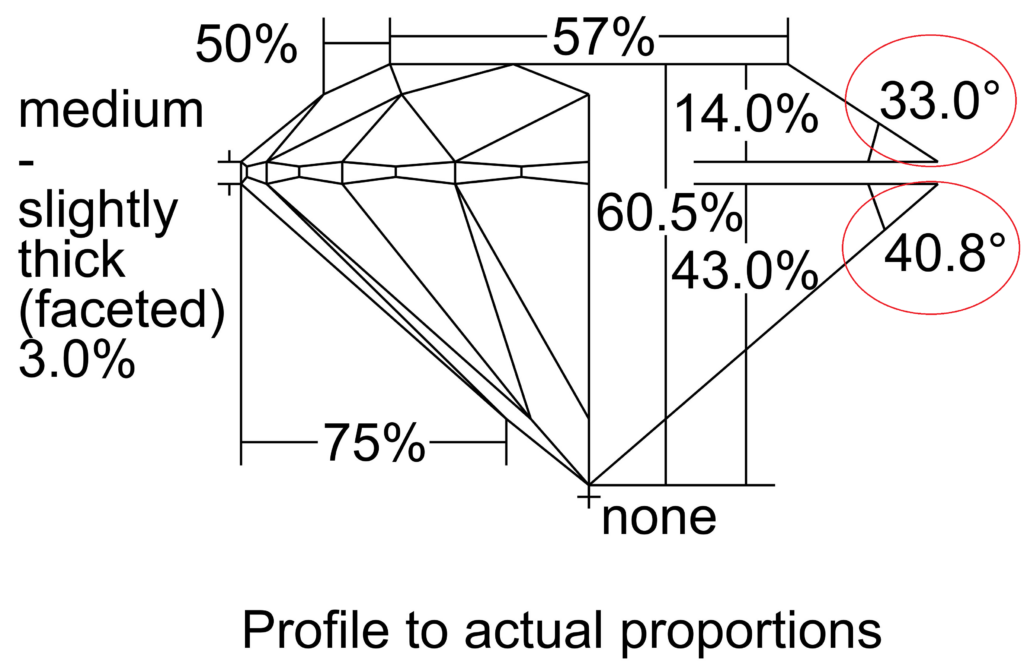
Tolkowsky ideal round diamond proportions reflect a 34.5 degree crown and a 40.8 degree pavilion result in the most sparkle. However, you don’t need these exact angles to max your sparkle – you just need his math. A good rule of thumb is for every 1.0 degrees steeper your crown, subtract 0.2 degrees from your pavilion (for example: 35.5 crown, 40.6 pavilion). Likewise, for every 1.0 degrees shallower your crown is, add 0.2 degrees to your pavilion (for example: 33.5 crown, 41.0 pavilion).
Pro Tip! Diamonds with nice black arrows, like the one on the left below, often have ideal proportions. Diamonds without any “contrast” (dark arrows) will not be as sparkly.
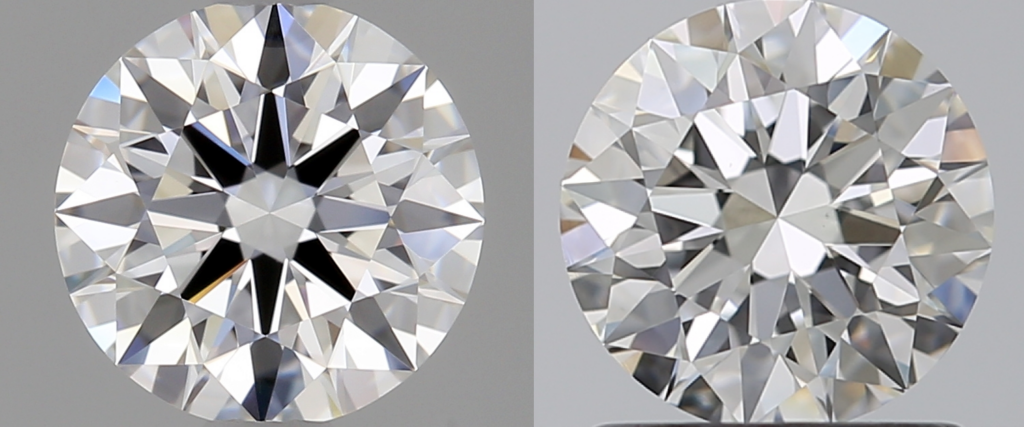
(left) Ideal cut Round diamond vs Not ideal cut Round (right)
You can do this! Set your diamond search parameters to exclude anything but “Excellent” cut Round diamonds, then also set your table to 55-60%, depth percentages to 58-62%, and of course, your budget! Then, pick out 2-3 stones that strike your fancy. Pull up the Diamond Certificate, and compare your pavilion and crown angles against Tolkowsky’s angles to confirm ideal round diamond proportions. High/low, low/high. You got this.
So, there’s also a less-involved way to compare your Round Engagement Ring’s light return, too. Some diamonds come with their own computer-checked light return analysis. These are called “ASET Images.” An ASET Image is a color-coded photo of the diamond that shows how a diamond returns light.

Finally, and very importantly, you do not want much white or black. White or black (depending upon the background of the image) mean you’re losing light out the bottom of the stone, never to be seen again. Look at all that light loss in the “average” stone!!
Red, all day, every day. You also want well defined blue. Green should be minimal. If it looks like it has white or black polka dots, you’re missing some light.
Still feel a little overwhelmed? That’s where diamond experts come in. If you have questions about diamond proportions, ASET Images, or just want help choosing between stones, email our gemologist here. I’m a GIA Graduate Gemologist and an AGS cut aficionado, which means I live and breathe this stuff. Answering your questions would make my day!
All the colors, clarities, and angles you just learned are only worth so much as the paper they are written on. In other words, you can’t know them without a credible Diamond Certificate. GIA, AGS, and GCAL certificates are exacting, and IGI certificates stand up for lab created diamonds. Other labs simply do not hold up. So, make sure you are comparing apples to apples. A GIA graded G color will look white. An EGL graded G color will show color. Finally, diamonds sold without certifications are typically not top quality stones (else they would have been sent for certification). And, most jewelers selling them don’t know any better than you do what angles the gem has. Did you know that jewelers do not need any diamond or gemstone education to open a shop?
A long time ago, I once heard a jeweler tell a customer, “buying a non-certified diamond is like getting a puppy without papers. It’s still a puppy.” To which the (smart) customer said, “if I ever buy a puppy worth thousands of dollars, I want papers.”

The key to making sure you get what you pay for – and that your investment is protected – is a credible diamond certification. A diamond certification is a lab report from an independent laboratory that lists the diamond’s color, clarity, and proportions. So, it’s not just your jeweler’s word, it’s the professional opinion of someone who doesn’t have a horse in the race. Here’s my really long-winded explanation of why I suggest GIA for Natural Diamonds, and why I suggest IGI or GCAL for Lab Diamonds. And here’s the recap:
Your jeweler knows diamonds. They’ve probably done this for years or decades. However, you’ve probably not made a life out of looking at the minute differences between diamonds. So, your jeweler has a bit of an upper hand in this scenario. A credible diamond certificate levels this playing field, because there’s no wiggle room or ability to stretch the truth with an independent diamond quality analysis. So, you both know exactly what the diamond is, and what to compare it against. Less credible certificates, such as EGL, are “upgraded” (meaning an H color stone could be “certified” as an F), giving that power back over to your jeweler (who knows about, and will use, the upgraded color). As a result, when you demand a credible diamond certificate like GIA or GCAL, you and your jeweler are on equal footing.
For Natural Diamonds, GIA does the strictest diamond grading out there. When a Natural diamond has a GIA certificate, you know the color, clarity, and all the diamond proportions are correct. For Lab Diamonds, GIA, IGI, and GCAL are the most credible. In comparison, labs like EGL can be upwards of 2 grades off. You’ve done this much work to understand everything – don’t let an upgraded report ruin things.
Your Round engagement ring is one of the most emotional (and expensive!) purchases you’ll make in your life. A credible diamond certificate ensures you get exactly what you bargained for, and also that your partner and your insurer know exactly what you have. A credible diamond certification also makes sure that your investment is protected in the event you want to upgrade or pass down your diamond to a beloved child – your diamond certificate proves its quality and value.
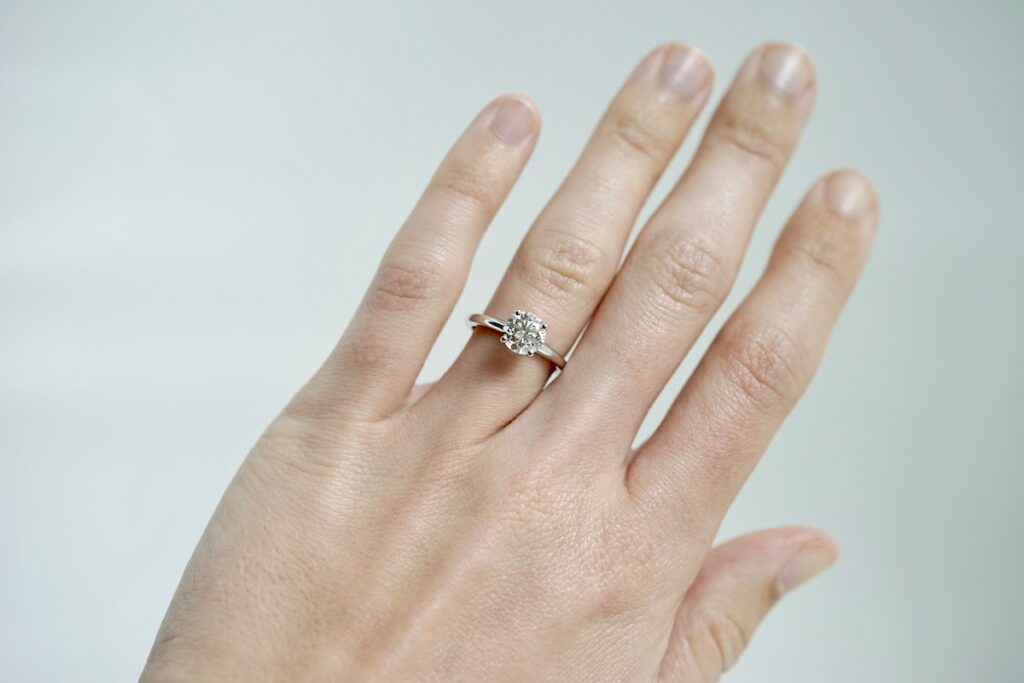
7mm (about 1.3 carat) Round Lab Diamond Engagement Ring
No worries! Email me here and I’ll walk you through it. Chatting with me is free. And together, we’ll make sure you get the best Round engagement ring for your taste and budget.
Verifiably Ethical & Sustainable
Guaranteed 1:1 Impact
Personalized 1:1 Customer Service
handcrafted & american-made
you before us, always
Verifiably Ethical & Sustainable
Guaranteed 1:1 Impact
Personalized 1:1 Customer Service
handcrafted & american-made
you before us, always
Thoughtfully crafted, made to last, and designed for life's most meaningful moments. LEARN MORE
Diamonds, Gemstones, & Metals
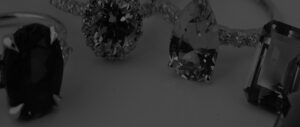
Every piece of Do Amore jewelry begins by not hurting the world. All our natural diamonds are either ethically sourced in Canada, recycled to eliminate additional demand, or accompanied by a blockchain ledger showing every hand your diamond passed through, proving your stone is truly conflict-free.
We also offer sustainable lab-created stones and guarantee all precious metals are recycled to eliminate the environmental impact of mining. Since March 2022, we carry absolutely no Russian diamonds and continue to urge the industry to follow suit.
Clean Water
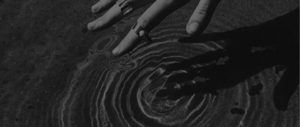
We desire to deepen the well of love in the world. We guarantee that every single purchase—whether engagement ring, wedding band, or piece of jewelry—directly impacts one person’s life by giving them access to clean water.
We do this by directly matching jewelry purchases to people in communities to ensure our funding has a one-to-one impact. We also show you the exact GPS coordinates and a photo of the water well your ring or piece of jewelry helped fund.
Customer Service

As a small, 100% founder- and employee-owned team, one-to-one encounters are at the heart of our values. Whichever way you want support throughout your engagement ring or jewelry purchase process, our team is here to accommodate you.
From high-touch to hands-off, video calls to text messages, you have our dedicated, responsive team on your side from the moment you start your search, to the day your well is built, to the time we meet again.
Engagement Rings, Bands, & Jewelry
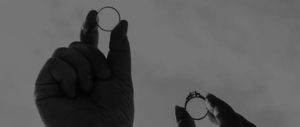
Every Do Amore design, whether one of our own or unique to you, is beautifully handcrafted in America and made specifically for you. Each ring is made to order, every time.
From classic to custom, you have the option to select from dozens of gorgeous settings or work with our design team to create something entirely bespoke. Plus, you are always covered for free inspections, polishing, cleaning, stone tightening, rhodium-plating, and resizing for life.
Our Promise

We care about what matters most to you, not what’s easiest for us. If it’s a minor change to a setting or arriving at a completely custom design, we work to ensure you get precisely what you love.
From statement-making to understated, we have options at any price point. Plus, you always have our team on your side searching to bring you every stone within your specifications. We also offer 60-day returns and a limited lifetime warranty to cover you in the rare event of a manufacturing defect.